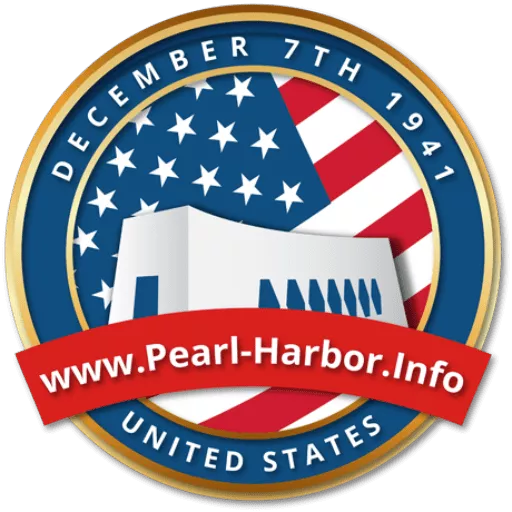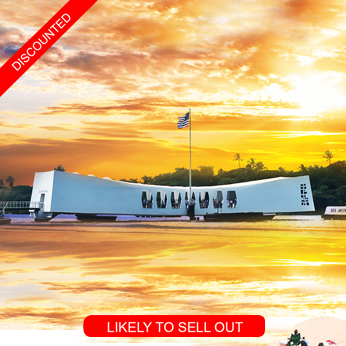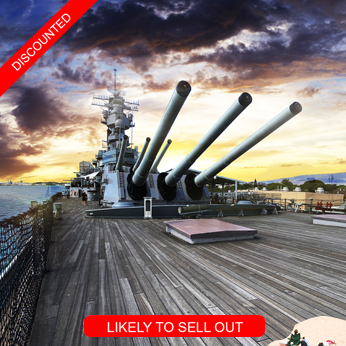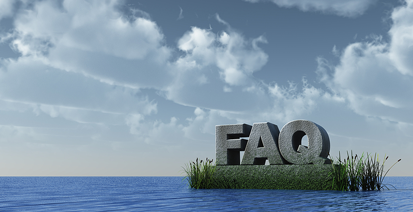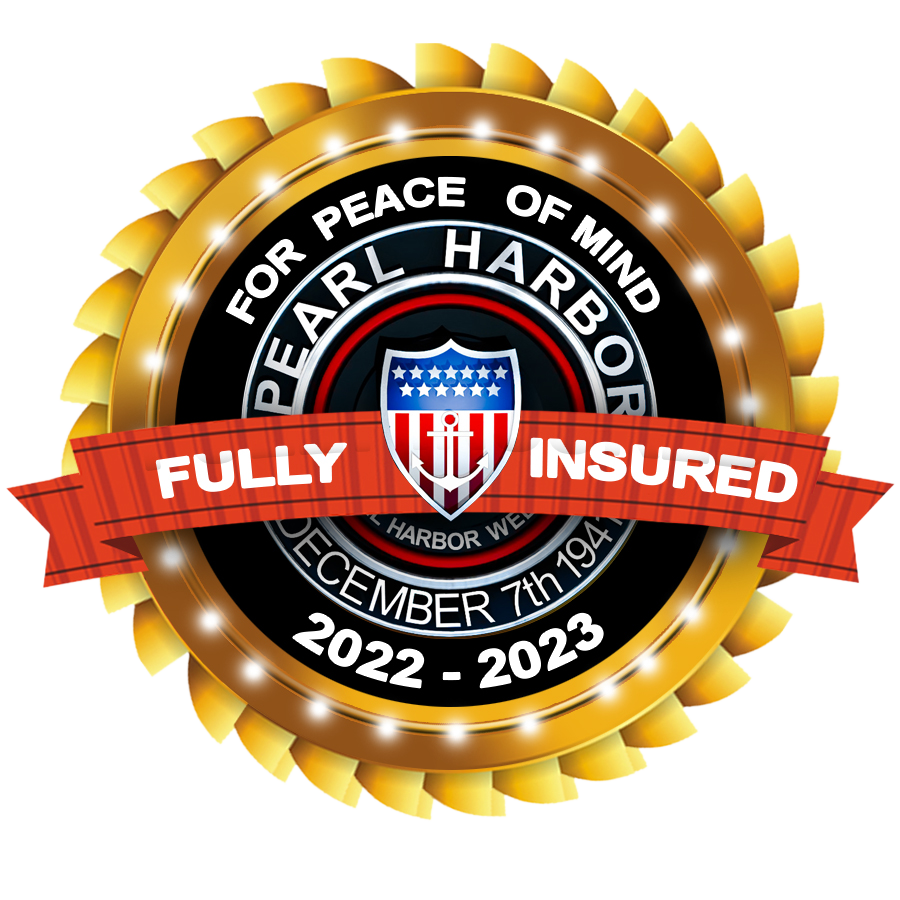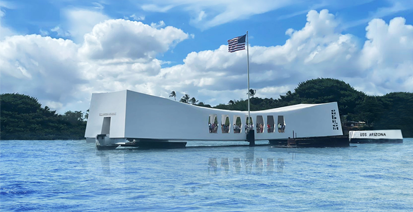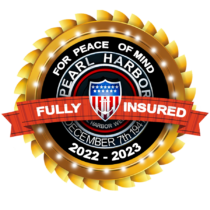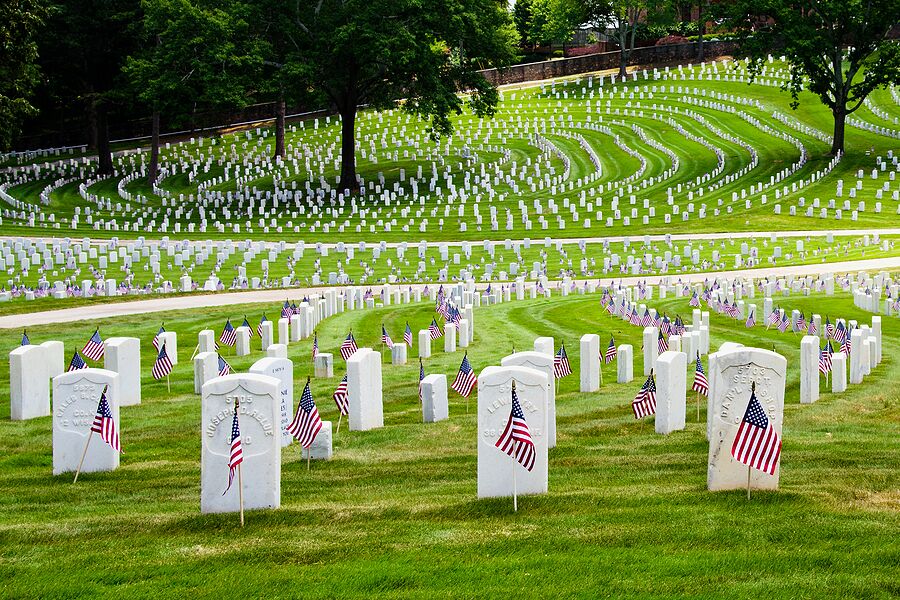
One place that everyone who comes to visit Oahu should see is Punchbowl Cemetery. The cemetery’s official name is the National Memorial Cemetery of the Pacific. However, most people know it simply as Punchbowl Cemetery. Effectively, the cemetery is the equivalent of Arlington National Cemetery, just in the Pacific. The Punchbowl Cemetery is also unique in that it is the only National Memorial Cemeteries located on top of a mountain about four miles from Waikiki, 6.6 miles from the Honolulu International Airport, 2.5 miles from Honolulu port, and 9.1 miles from Pearl Harbor National Memorial.
The elevation of 272 feet gives the cemetery a beautiful view of Honolulu below. In recognizing that Punchbowl Cemetery is an important place to visit, most Oahu Tours, especially Pearl Harbor tours, Oahu circle island tours, and Honolulu City Tours, include a drive-through of the National Memorial Cemetery of the Pacific. Sometimes you will drive through it on the Way to Pearl Harbor, or as is most often the case after the Pearl Harbor Tour departs the Pearl Harbor Visitor Center on the Way back to the Waikiki Hotels. However, in all cases, no tour vehicle can stop in the cemetery and let passengers out. Punchbowl Cemetery is an active cemetery, and to be respectful to those buried there and their families, Punchbowl Cemetery has strict regulations that prevent tour vehicles from stopping and letting passengers out. That is not to say that one could not go to Punchbowl, only that you would have to go on your own if you wanted to walk around the cemetery.
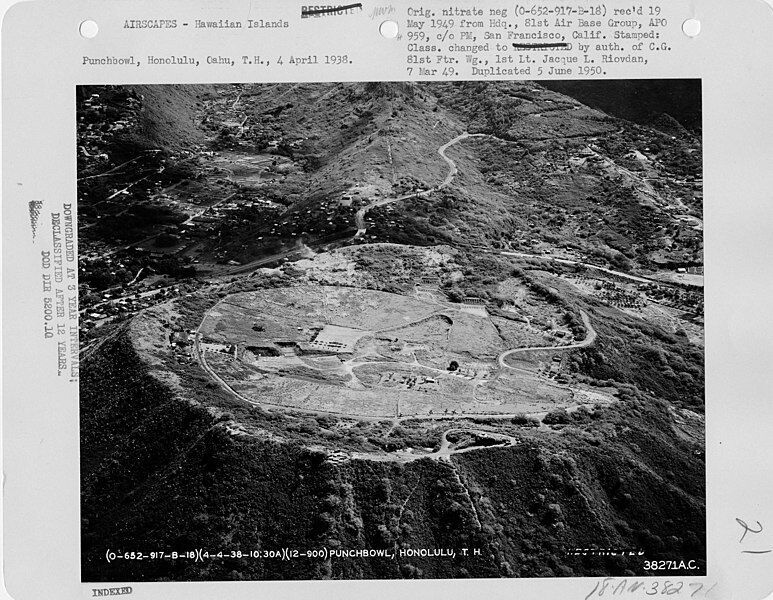
Hawaii - Oahu Island, Unknown author or not provided, National Archives and Records Administration, cataloged under the National Archives Identifier (NAID) 23938473, PD-USGov
The most common Native Hawaiian name for the mountain where the cemetery is built is Puowaina. This extinct volcanic crater was the location of many ancient Hawaiian rituals, including Human Sacrifice. Once the Kingdom of Hawaii was established, King Kamehameha placed a pair of saluting guns atop the mountain to welcome foreign dignitaries. The crater eventually ended up in the hands of the Hawaii Territorial guard, which has facilities in the crater. During WWII, there were plans to use the Punchbowl as a location for shore batteries to defend Honolulu Harbor in the event of invasion. Tunnels were dug into the crater rim for the guns and observation positions. However, these plans were never completed. While there had been thoughts of making Punchbowl crater into a cemetery as far back as the late 19th century, such plans were not popular. It was not until WWII that plans were set in motion to establish a National Cemetery with Punchbowl Crater as the location. Any plans were only put into action after WWII. In 1949 the National Memorial of the Pacific was dedicated. The first burials at the new cemetery were casualties of the fighting in the Pacific Theater of WWII. Many were disinterred from burial sites across the Pacific and reburied in the Punchbowl Cemetery.

The National Cemetery Administration, a part of the Department of Veteran Affairs, manages the National Memorial Cemetery of the Pacific. Currently, there are around 61,000 people interred in the Punchbowl Cemetery. Those interred in the cemetery are mostly veterans and their dependents. The veterans range from WWI up to today. Questions have arisen about how many plots are still available in the cemetery. In fact, with some exceptions, such as in the case of family members being buried in existing plots, all new burials are of cremated remains interred in a columbarium with very few in-ground urn or casket burials. In Hawaii, casket burials are far less common in general than cremation.
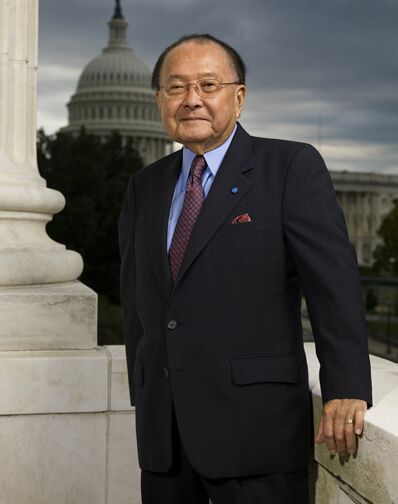
Daniel Inouye, senator from Hawaii, United States Congress, https://www.senate.gov/artandhistory/history/common/image/InouyeDanielK.htm, PD-USGov
The cemetery is the final resting place of some well-known Americans as well as many of America’s Heroes from past wars. Thirty-Two Medal of Honor recipients from WWII, Korea, and Vietnam are interred in the cemetery, many coming from the famous 442nd Regimental Combat Team, which fought in WWII. Among them is Hawaii’s longest-serving representative, Senator Daniel Inouye, who served in the Senate from Hawaii’s Statehood until his death in 2012. Some people of note buried there are famous war correspondent Ernie Pyle, a Pulitzer Prize-winning reporter who died in the fighting on Iejima in 1945. In addition, Hawaii’s only Astronaut Ellison Onizuka who perished in the Challenger disaster, is buried in Punchbowl. Other well-known figures buried at Punchbowl are; Harold Sakata, a WWII veteran, and actor best known for the role of Oddjob in Goldfinger; Charles Veach, a former NASA Astronaut; Wah Kau Kong, the first Chinese-American fighter pilot, Norman Collins, a Navy veteran, was a local tattoo artist and mentor to Ed Hardy, Henry Oliver Hansen a US Marine who was one of the flag raisers on Iwo Jima, Stanley Armour Dunham a WWII veteran and grandfather to President Barack Obama, and many more. Many of Hawaii’s notable politicians are buried at the Punchbowl Cemetery, such as former longtime Mayor of Honolulu Frank Fasi (USMC Veteran), Senator Spark Matsunaga (US Army, WWII), Governor John Burns, Congresswoman Patsy Mink, and Governor William Quinn, Hawaii’s first Governor.
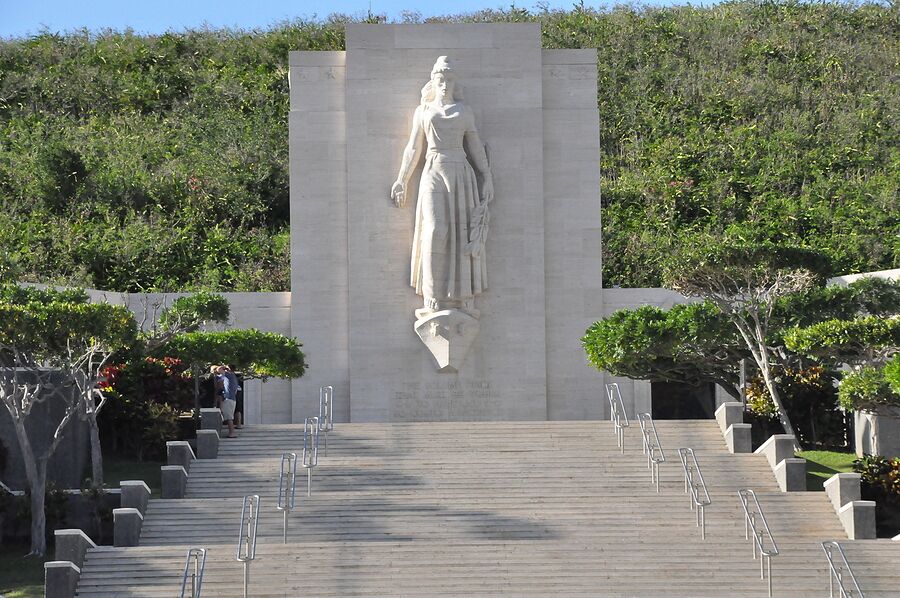
Although we look at the well-known people buried at Punchbowl Cemetery, there are also those who deserve recognition and may receive it someday. Amongst the rows of grave markers, you may notice some that are labeled Unknown WWII or Unknown Korea. These are the remains of those who remain to this day unidentified. Most of the unknowns from WWII are victims of the Pearl Harbor Attack. Many belong to those who died aboard the USS Arizona battleship when it exploded, their bodies being unrecognizable. While their names are inscribed on the wall in the USS Arizona Memorial shrine room, their remains may yet lie in a grave marked as Unknown Pearl Harbor. The unknowns from Korea were repatriated from battlefields of the Korean War, remaining where they fell alongside North Korean and Chinese troops. Efforts are ongoing to reduce the number of unknowns at Punchbowl and other cemeteries worldwide. The US military has a special unit called the Joint POW/MIA Accounting Command (JPAC), which is tasked with repatriating and identifying America’s war dead from all past wars. They seek to identify unknown soldiers using the latest DNA analysis and forensic investigative techniques. Through their work, many of the Unknowns were able to be identified and either given a proper burial or returned to their families elsewhere.
At the back of Punchbowl Cemetery, there is a large memorial. Established by the American Battle Monuments Commission, this memorial is dedicated to those who are Missing in action, whose bodies were buried at sea, or whose bodies are otherwise unrecoverable. The monument bears the names of 28,788 US military personnel listed as missing in action or who were buried at sea in WWII, Korea, and Vietnam. The memorial’s centerpiece is a large statue known as Lady Columbia or Lady Liberty. This statue is most well known for its appearance on both versions of Hawaii Five-O. Lady Columbia stands at the bow of a ship, and relief below her is an excerpt from Abraham Lincoln’s letter to Mrs. Bixby.
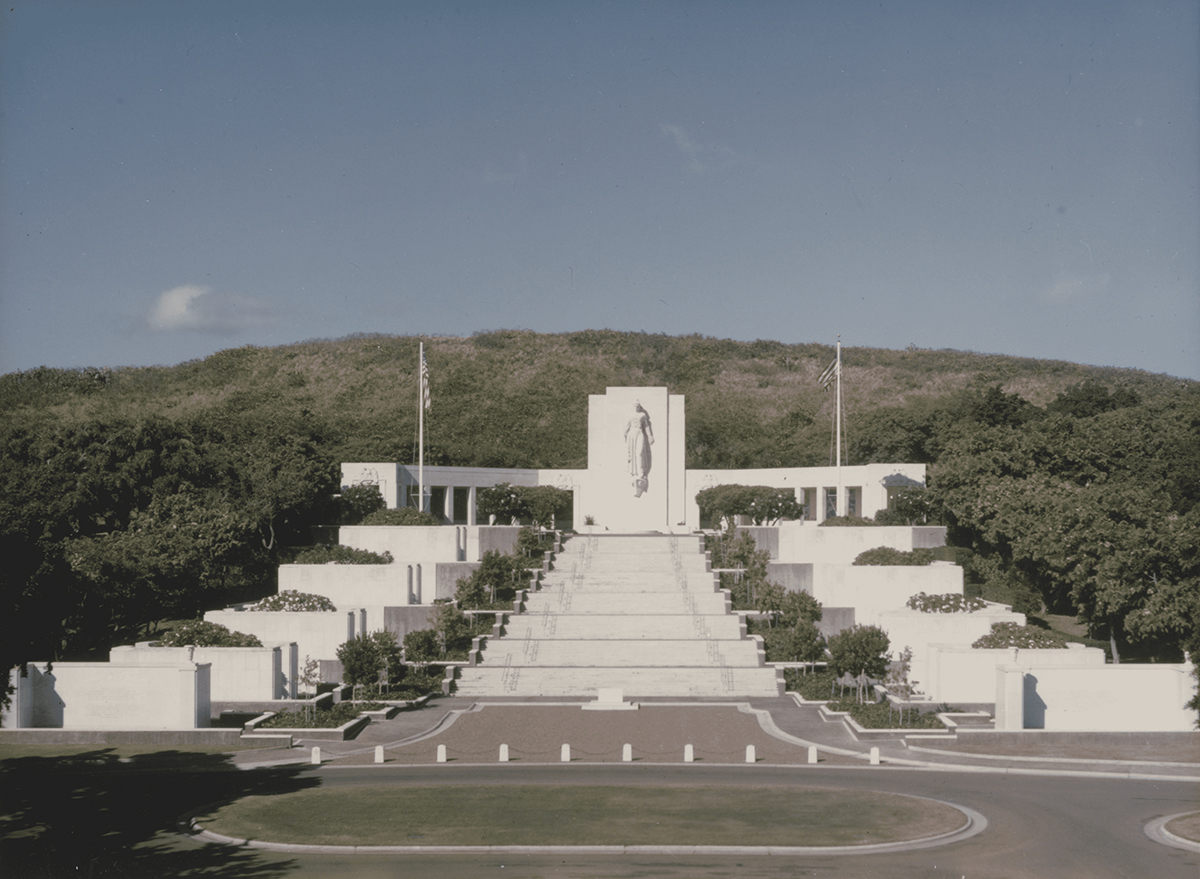
While the image of Lady Columbia has adorned our TV screens, it has not been without controversy. During filming at the cemetery for the latest incarnation of the popular TV show Hawaii Five-O, allegations were brought about that the film crew was being disrespectful to the graves in the cemetery while filming, which the production company did deny. This controversy did eventually subside; it did leave a bitter taste in the mouths of many locals. For their part, the cemetery management did revise their rules regarding filming and tourism in the cemetery. One should note that in many Asian cultures, it is extremely disrespectful to step on headstones, and this has embedded itself in the local culture of Hawaii to varying degrees.
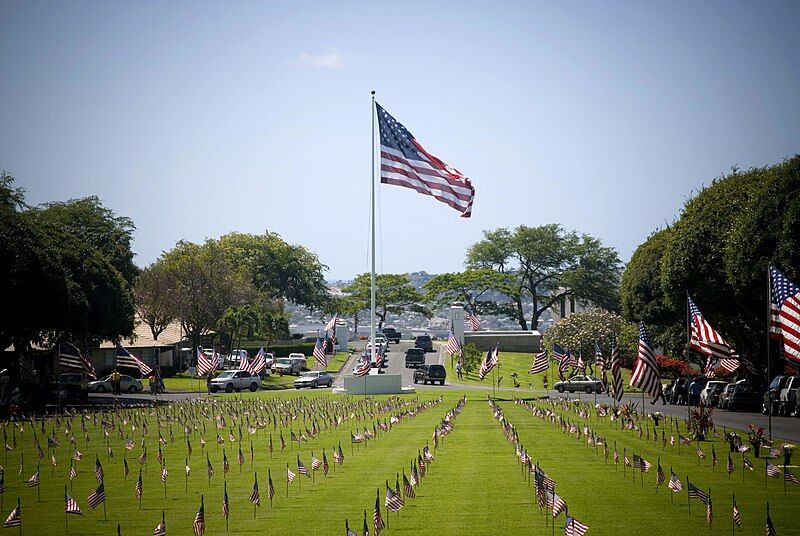
HONOLULU (May 27, 2007) - The National Ensign waves prominently during the Roll Call of Honor in Remembrance Ceremony. The U.S. Department of Veteran Affairs and more than a dozen other volunteers and service organizations, honored our countries fallen heroes on Memorial Day by holding a Roll Call of Honor in Remembrance observance. The memorial service marks the 8th Annual Roll Call of Honor in Remembrance Ceremony, held at Punchbowl National Memorial Cemetery of the Pacific., U.S. Navy photo by Mass Communication Specialist 2nd Class Ben A. Gonzales (RELEASED), United States Navy with the ID 070527-N-4856G-008, PD-USGov
One day to visit Punchbowl tops all others. That day is Memorial Day. The cemetery is transformed, and ceremonies are held. There is usually a flyover by the Hawaii Air National Guard with a missing man formation. In the days leading up to Memorial Day, the grounds are cleaned up, and Boy Scouts and volunteers descend upon the cemetery to plant an American flag upon each and every gravestone in the cemetery. The roads leading to and within the cemetery are lined with American flags. Even from below, you will know that preparations for Memorial Day are ongoing when you see the flags go up.
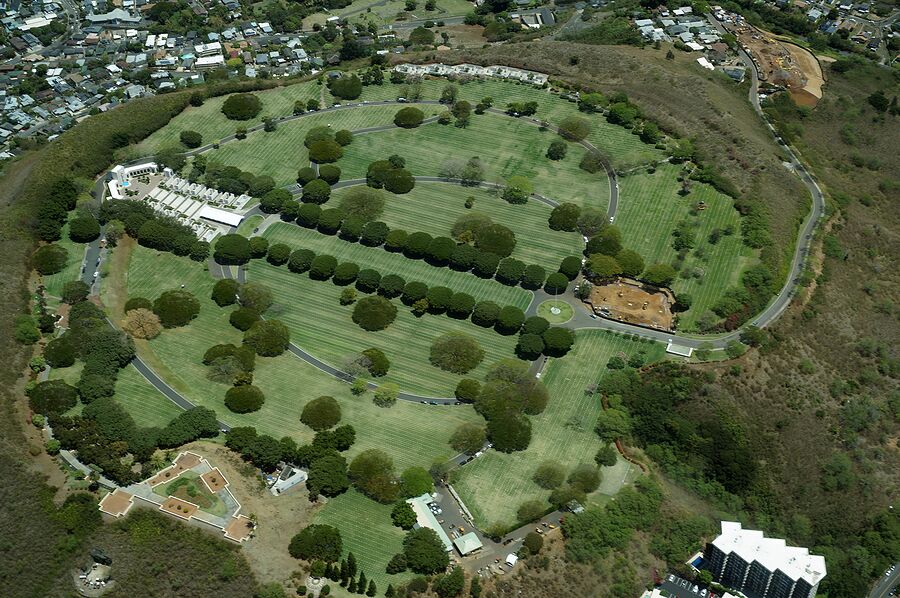
Punchbowl is one of the most visited locations for tourists on the Island of Oahu, right up there with the USS Arizona Memorial. However, there are some things to consider. Remember that no tour company under any circumstances can stop at the cemetery and let people out. This is against the law, and violators can be permanently banned from the cemetery. If you hire a private car, they will have to park outside of the gates for you to walk in unless you are there specifically to visit a family member buried there. Also, there are no restroom facilities at the cemetery. Above all, when visiting, please remember that Punchbowl Cemetery is an active cemetery where people go every day to visit with departed family. Please remember to be respectful.
Most Popular Oahu Tours
Best Pearl Harbor Tours – NOW ON SALE

The following tours are recognized as the most popular Pearl Harbor Tours on Oahu. While generally, our price is the lowest in the market now, for a limited time, they are on sale too.
